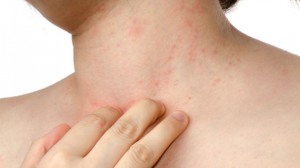 When you find yourself in the middle of nowhere for days, trying to stay alive, there are a lot of things you and your loved ones need to protect yourselves from. You might first think of keeping safe from large and dangerous animals, having enough to eat and to drink, not to freeze to death if it’s really cold…
When you find yourself in the middle of nowhere for days, trying to stay alive, there are a lot of things you and your loved ones need to protect yourselves from. You might first think of keeping safe from large and dangerous animals, having enough to eat and to drink, not to freeze to death if it’s really cold…
But experiencing the wild also means dealing with sunburns, coming in contact with toxic plants or being bitten by insects. This can happen while camping, too. So be prepared for anything, in any situation, that’s what I always say.
The best part is that all of these problems can be treated naturally and I`ll show you exactly what to do to ease the pain from itches and nasty blisters. Here some of the natural remedies you can use:
#1: Remedies for blisters
Blisters can have multiple causes. For example, sunburn causes painful blisters – tender spots that fill up with fluid and burst very easily as a result of skin damage. Blisters can also come from insect bites that you scratch too much or from shoes rubbing up against your skin (but you can prevent this by buying comfortable, good quality shoes. Remember that you might have to walk for miles in search for a shelter or safe place).
Here are some natural, cheap home remedies you can use to relieve the pain and itch from blisters:
– Wash the area with a mild soap and tap it gently with a soft clean towel, to keep the area sanitized (or use the alcohol you’ve packed in your bug-out bag).
– For soothing and quicker healing use aloe. Squeeze the gel directly on the blister; works for itches and bites, too. Make sure you pack in your bag-out bag a natural aloe vera gel or cream bought from your drugstore or health food store.
– Vinegar, sprayed directly on the blister, is great to cool the skin and feel some ease.
– Baking soda mixed with water sprayed on the spot has the same effect (and it’s best to leave the baking soda mix on the blister overnight)
Warning: Don’t scratch or pop the blister – there` s a high risk of infection! My advice is to cover the area to keep yourself from scratching it.
#2: Remedies for itches
Itching is something you should definitely be prepared for as it may be caused by numerous plants, flea bites and even unfit clothing (made of wool or acrylic), and it’s really dangerous.
Spots, blisters, rashes, and red skin may accompany itchy skin. Also, due to constant scratching, your skin can get dry or it can crack.
Constant itching can also cause anxiety. And you surely don’t need the extra stress while already having a lot of physical pressure and nervousness to deal with in a survival or emergency situation.
In most cases you can contact an itchy rash (that can last for 1-3 weeks!) from poison ivy, oak, and sumac. Touching their toxic leaves (roots, stems, flowers and berries, too) can give you contact dermatitis. This reaction is caused by contact with the irritant urushiol, resin found in poison ivy plants.
Now here`s what you can do to ease down that fiery itching:
– Apply moist compresses on the itchy area.
– If the rash is on your hand, arm, leg, or foot, soak the area in cold water and leave it there for a few minutes (make sure the water is not TOO cold, however).
– Avoid excessive heat and humidity – sweating can aggravate your itchiness.
– Wear comfortable clothes. Wear the softest ones you have, and make sure they`re either large or tight enough not to rub on your skin.
– Keep the itchy area covered, so you don`t feel tempted to scratch it.
Other tips, do’s and don’ts
– Stay out of the sun, wear sun protection cream, caps and sunglasses
– Dress appropriately, preferably in smooth breathable fabrics like cotton (wear long sleeved-shirts, long pants and socks)
– Try and keep your skin covered with clothing at most times, this offers protection against insects (and also keeps you from scratching it)
– Don’t touch plants you can’t identify
– Keep both eyes open for plants or insects that fight back
– Cold compresses on the skin are always beneficial, even pouring cool running water on the affected areas for a quick relief
– Pack antiseptic soap and oral nonprescription antihistamines that contain diphenhydramine or chlorphenamine maleate (to reduce swelling) in your bug-out bag
– Take immediate care of your skin, especially if the itching and pain get worse
– Watch for signs of infection (red skin or streaks, fever, weakness)
There are a lot of “home” remedies, but you only need to remember the essential ones or to make a list with DIY treatments and instructions. Better yet, print the list and put that in your bug-out bag, as well. It might save your life.
Source:www.myfamilysurvivalplan.com
